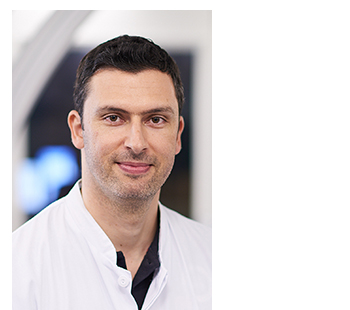Neuroradiology Research Group
Today, patients are usually informed about upcoming procedures by showing pictures and perhaps the tools to be used. But experience has shown that patients usually only understand to a limited extent where the problem lies and how it is supposed be solved. Virtual reality, however, can greatly improve this exchange: With it, the doctor can take the patient into a three-dimensional computer model of a part of his body and show exactly what is planned. This works even when the patient and doctor are at two distant locations. Without major modifications, the same system can also be used for procedure planning.
The neuroradiology group develops VR-applications for patient education and neuro-endovascular procedure planning, but at the same time a number of other solutions within the field of image generation, analysis and application. The group for example develops learning algorithms which may be able to decisively shorten diagnosis procedures for stroke patients by interpreting CT-data, or to optimize procedure logistics by automatically interpreting camera footage taken inside the angiography.
The Neuroradiology Research Group was founded in 2014. It is located at the University Hospital Basel and the Department of Biomedical Engineering, thus bridging the gap between research and clinical application. The Neuroradiology Research Group was already involved in a number of international multicenter trials in the field of stroke research, such as the ESCAPE-NA1 study and the TREAT-CAD Study. We also developed a new workflow approach streamlining the management of acute stroke patients within the hospital. This approach allowed time-saving effects of up to 30 minutes compared to the conventional management and led in a group of 230 consecutive patients to significant better clinical outcomes. To investigate this approach further in a multicenter randomized-controlled trial, we applied for a Grant (1.100.000 €) at the SNF (Swiss Nationalfund) and at the DFG (Deutsche Forschungsgesellschaft). Other areas of expertise are the interventional treatment of acute stroke patients. We pioneered new mechanical thrombectomy techniques, such as the Stent-retriever Assisted Vacuum-locked Extraction (SAVE) method. In total our workgroup was involved in the publication of over 120 papers in renowned peer-reviewed journals. We collaborate closely with the Departments of Neurology and Clinical Research at the University Hospital Basel as well as with international partners such as the Universities of Calgary, Bern, Göttingen and Hamburg.

Prof. Dr Marios-Nikos Psychogios
Head of Neuroradiology Group
Phone: +41 61 328 59 36
